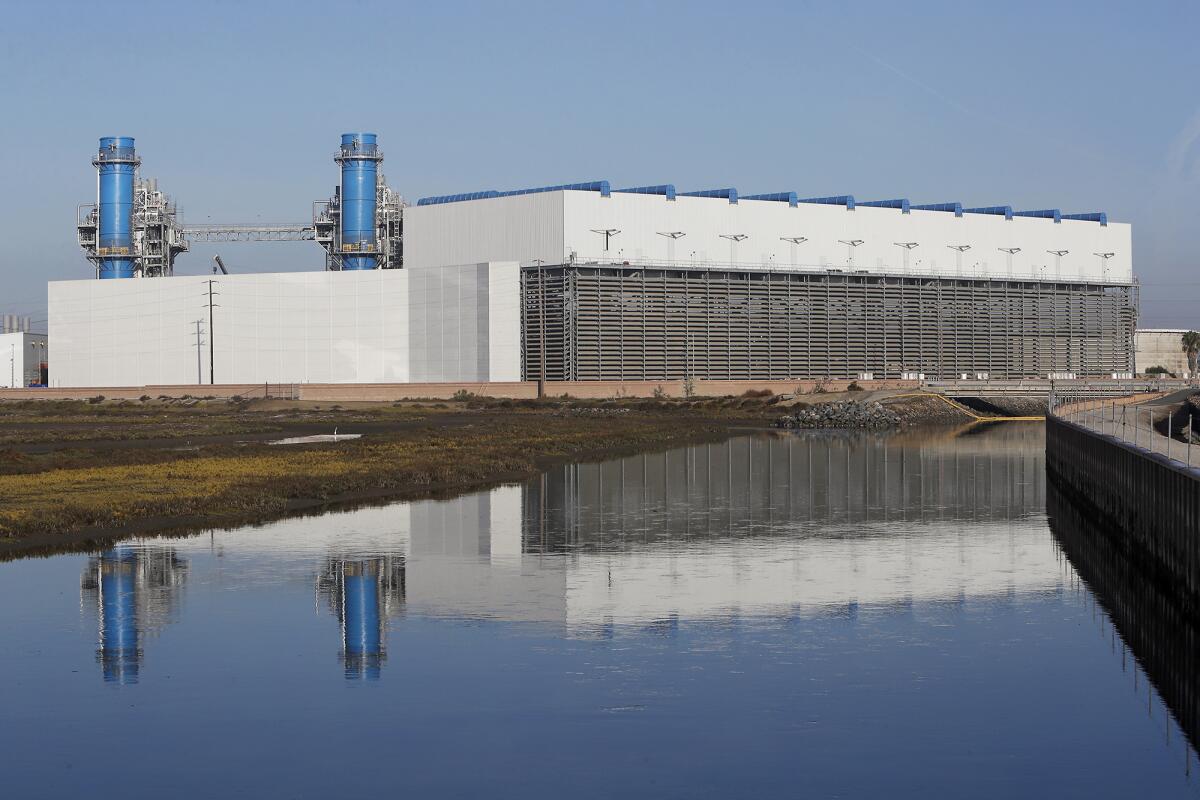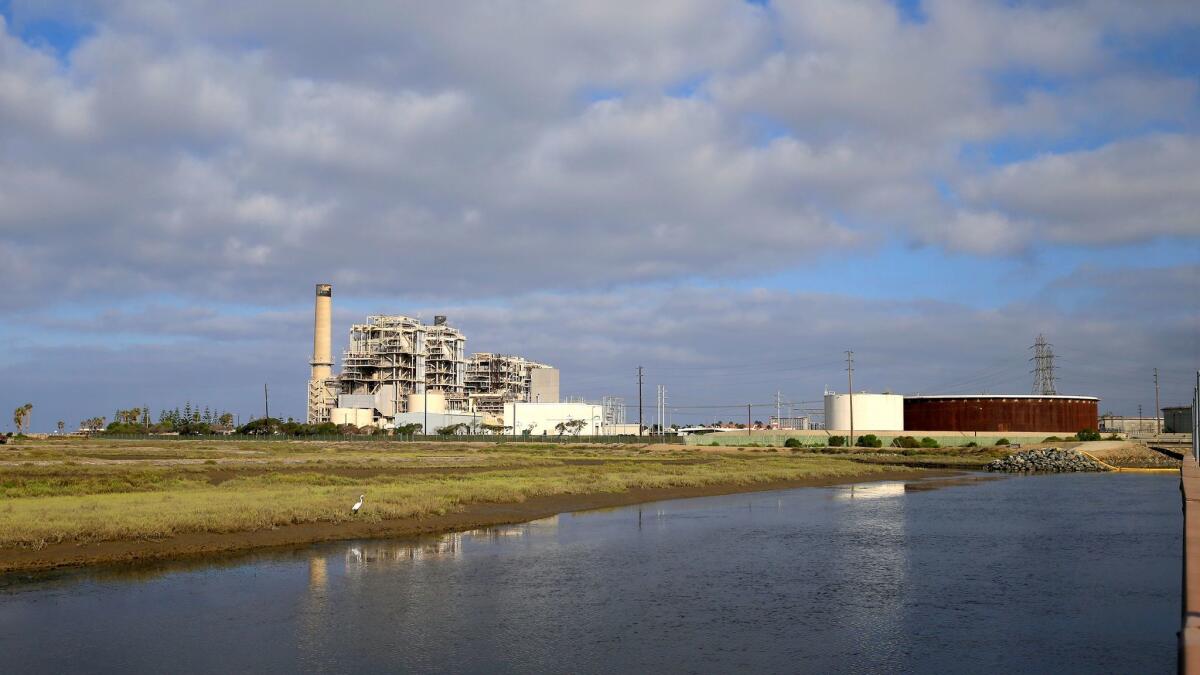New Huntington Beach power plant is issued emissions violations

- Share via
AES was slapped with two notices of violation over plumes emitted from its new Huntington Beach power plant during start-up activities.
The South Coast Air Quality Management District issued the notices accusing AES of emissions violations on two separate occasions, according to AES spokeswoman Dalia Gomez.
The notices concerned the shade, or opacity, of the plumes, not pollutants emitted, Gomez said.
“Visible-emissions violations can occur when a source produces uncontrolled smoke, dust or other particulate matter that reduces visibility and impedes air quality for more than three minutes in one hour,” the AQMD said in a statement Wednesday.
AES was issued a notice Oct. 4 regarding visible emissions at the Huntington Beach site. Two days later, the AQMD “responded to numerous community complaints and conducted additional investigations,” resulting in an additional notice alleging continued violations of visible emissions and public nuisance rules, the AQMD said.
AES requested a variance that will allow exemption from the visible-emissions rule while the new turbines are being commissioned. The variance was granted by the AQMD hearing board Oct. 10, according to the AQMD and AES.
“AES expects opacity issues to resolve as commissioning progresses and pollution control equipment continues to be brought online,” Gomez said.
The early phase of the start-up has produced yellow or light orange plumes from the plant’s two stacks.
On Monday, AES released an update responding to community comments about noise and the plumes. It followed a similar update last week in which the utility company said the disturbances are normal during the commissioning process and are temporary.
Each turbine and stack undergoes a two-part procedure to prepare for operations. The “first fire” phase involves starting the turbines, which can emit a white plume and an odor for the first 30 minutes, something that AES described as similar to turning on a new oven for the first time. The plume is the result of burning off dust, dirt or oily residue left from the manufacturing process, the company said.
During the “steam blow” phase, natural gas is combusted in turbines to create high-pressure steam that cleans the main pipes throughout the power plant, removing debris that could negatively affect operations.
When natural gas combustion begins, it produces the tinted plumes, which contain oxides of nitrogen, AES said.
Pollution control mechanisms haven’t yet been installed, which is leading to higher output than in normal operations, the company said.
“The air emissions during this period will not exceed acceptable levels of risk or air quality standards,” AES said.
During the steam blow phase, steam plumes might also be seen coming from other parts of the plant.
Noise from the plant also is a result of the steam blow process, the company said. When stacks are open, steam is released from the steam lines and vented into the atmosphere, causing a loud hissing sound.
Each of the two stacks will undergo the steam blow process before a second, simultaneous steam blow phase. The second stack began the process last week, AES said.
The early commissioning phase is slated to be finished by Oct. 26, the company said.

AES is replacing its existing power plant at 21730 Newland St. that was built in the 1950s and ’60s. That facility generates 450 megawatts of energy, enough to power more than 400,000 homes and businesses, according to the company’s website.
The new, modernized facility is intended to produce up to 844 megawatts of energy, enough to power 675,000 to 844,000 households at a time, and includes several changes, including using air instead of seawater to cool the plant.
AES has said that if the steam blow phase and follow-up operations go as planned, the plant could be operational in January, three months ahead of schedule.
Sclafani writes for Times Community News.
More to Read
Sign up for Essential California
The most important California stories and recommendations in your inbox every morning.
You may occasionally receive promotional content from the Los Angeles Times.











